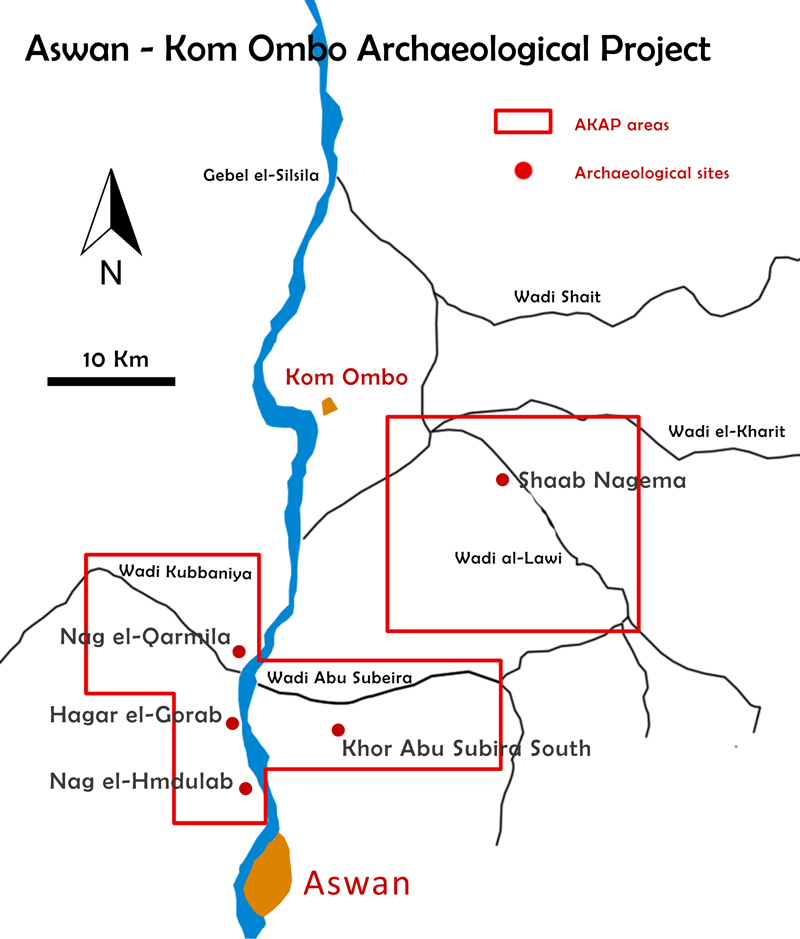Aswan - Kom Ombo Archaeological Project (AKAP)
Since 2005 the Aswan-Kom Ombo Archaeological Project (AKAP), led by Yale University and University of Bologna, investigated selected areas in the Aswan-Kom Ombo region. The main aim of the project is improving the current understanding of the interaction between Egyptian and Nubian populations along their border.
Thus far, the sites identified date during the Middle Palaeolithic through the Ottoman Period (Gatto & Curci 2010). Several rock art sites also occur, the majority of which cluster in two regions: the Gharb Aswan area and the Wadi Abu Subeira hydrographic system. From an archaeological perspective the most important rock art sites date to the Predynastic Period.

Recently, land reclamation, mining and quarrying activities along the Nile and within Wadi Abu Subeira severely endangered the rock drawings integrity and created the urgent need to document, in detail, the existing record. In combination with destructive modern human activities, limited time and resources for archaeological research require the definition and organization of more functional methodologies for recording and analysis of rock art. The use of digital technology integrated to more traditional practices of rock art recording, can improve the quality of documentation, leading to digital data sets, as well as reducing field work time.

